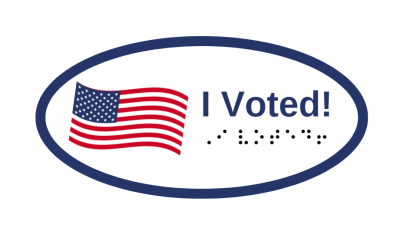
This article was originally published on the Social Security Administration’s Social Security Matters blog.
By Thomas Hicks, Chairman, U.S. Election Assistance Commission
During the 2022 midterm election, 38.3 million voters with disabilities will have the opportunity to participate in the democratic process. These voters may include you, one of your friends, or a family member.
Voters with disabilities face unique obstacles when casting their ballots. The Help America Vote Act ensures that all voters with disabilities have the right to mark, cast, and verify their ballots privately and independently. The Election Assistance Commission (EAC) helps voters with disabilities register to vote and understand their options to cast ballots.
As the November midterms approach, here are tips and resources to help those with disabilities fully participate in our democratic process:
Know your rights to accessible elections
As a voter with a disability, you have the right to:
- Vote privately and independently.
- Vote in an accessible polling place with voting machines for voters with disabilities.
- Seek assistance from workers at the polling place who have been trained to use accessible voting machines.
- Bring someone to help you vote.
You can also ask your local election officials ahead of the election to tell you about available voting aids, voting assistance, and mail-in or absentee ballot procedures.
The EAC developed a pocket-sized voter card and a large print version in braille that serve as guides about voting rights for voters with disabilities.
Use trusted sources of information to help you vote, contact your state and local election officials
With the rise of social media, election information can come from a range of sources and often varies from state to state. Make sure you use official sources of information about registering to vote, updating your registration, and casting your ballot.
What sources of information should you use? The best sources for election information are your state and local election officials. At the local level this is often, but not always, a county office. These election officials can address any questions you may have about the voting process as well as available accomodations if you have a disability. To find your state and local election office, go to EAC.gov/vote.
Learn about the various methods to register and vote in your state
An increasing number of states and voters use alternative means of voting. According to the EAC’s Disability and Voting Accessibility in the 2020 Election Survey, voters with disabilities are more likely to vote by mail than in person. Go to EAC.gov/vote to learn more about your options.
Other ways the EAC is helping to improve voting access for people with disabilities
During the 2020 general election, over 80% of voters with disabilities reported voting independently without any difficulty. Only 5% of voters with disabilities surveyed reported having difficulties using mail ballots. While this is an improvement over previous elections, the EAC understands there is more work to be done. As part of their efforts, the EAC equips election officials with best practices on accessible voter registration, in-person voting, and voting by mail. The EAC also conducts research to identify accessibility gaps and other resources.
Safe, secure, and accessible elections are the foundation of our democracy. This November, we encourage every voter to understand their rights and use trusted sources of information before casting your ballot. You can find a comprehensive list of resources for voters with disabilities on EAC.gov.

